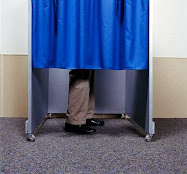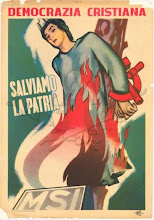The wonder, really, is that the nomination train wreck confronting the Democratic Party didn't happen years earlier.
The stage was set for the current stalemate over five marathon days of negotiations in June 1988. In the fifth-floor conference room of a Washington law firm, representatives of Michael Dukakis, the party's nominee, and Jesse Jackson, his unsuccessful challenger, hashed out a new set of delegate selection rules.
Jackson felt aggrieved that he had not amassed as many delegates as his popular vote total would have suggested. In the 1984 primary campaign, for instance, Jackson won 19 percent of the popular vote but received just 10 percent of the delegates. So Jackson's rules guru, Harold M. Ickes, insisted on adopting proportional representation rules that would award insurgent candidates a bigger share of delegates in future contests.
Twenty years later, the rules Ickes advocated seem to be working against his current candidate, Hillary Clinton, reducing the impact of her wins in delegate-rich states such as California, New York and New Jersey. But Clinton could be saved by an unintended consequence of the move to proportional representation: Because the system tends to produce a stalemate between two strong candidates, it ends up supersizing the role of party pooh-bahs known as superdelegates.
All this was predicted long ago by Tad Devine, the Democratic Party operative who represented Dukakis in the rules negotiations. In a prescient 1991 article, Devine and Anthony Corrado explained the paradox:
"The move to strict proportional representation, which was adopted to ensure that delegate outcomes would better reflect the will of the electorate," they wrote, may instead "have produced a system in which party leaders and elected officials will hold the balance of power in determining the outcome of nomination contests."
In short, the Democratic Party has come up with a characteristically muddled method of choosing presidential nominees, with rules that are simultaneously overly and inadequately democratic.
The overly democratic part involves ultimately giving too much weight to the losing candidate's vote. Under the rules, three-fourths of the pledged delegates are allocated by congressional district, the remaining one-quarter according to the vote statewide.
This leads to bizarre "everybody wins" results in the many congressional districts that have an even number of delegates. As a result, campaigns devote inordinate resources to districts that happen to have an odd number of delegates.
Consider a four-delegate district. For a candidate in a two-person contest to get three of the four, he would have to win a daunting 62.5 percent of the vote. The more likely outcome is that the winner and loser get two delegates each.
To obtain more than a one-delegate edge in a five-delegate district, the winning candidate would have to take 70 percent of the vote. The upshot: In a close race, it's extraordinarily difficult for one candidate to get very far ahead of the other.
The impact of this was clear in California, the biggest delegate prize. Clinton won43 of the state's 53 congressional districts, and 52 percent of the popular vote to Obama's 42 percent. But under the proportional representation rules, and with 32 of the districts offering an even number of delegates, she received 207 delegates to Obama's 163. Had Democrats used the Republicans' formula in California -- with delegates awarded on a winner-takes-all basis by congressional district and statewide -- Clinton would have received 316 delegates, Obama just 54.
It's not that one system is demonstrably right and the other obviously wrong. The preponderant Republican method arguably gives too much of an advantage to the dominant candidate, the Democratic approach too little.
But the inherent flaws in the Democrats' system are exacerbated by the inadequately democratic institution of superdelegates, the elected officials, members of the Democratic National Committee and other party luminaries who can choose according to their own preference.
It's not unreasonable to carve out a special role for party leaders. The idea of superdelegates, introduced in 1982, was to invest elected officials in the eventual nominee and prevent the party from veering too far off course in its selection (see: George McGovern in 1972).
But the number of superdelegates -- 796, or 19 percent of all delegates -- combined with proportional representation creates a potentially toxic interaction.
As Devine and Corrado explained in 1991, "the primary consequences of the move to proportional representation is that the superdelegates now stand as the only bloc of delegates in which it may be possible to build an extraordinary delegate margin."
As intended, superdelegates gave a boost to Walter Mondale over Gary Hart in 1984; they helped cement Dukakis's lead in 1988. But there is a difference between bringing closure and determining outcomes. Once the nominee is selected, whenever that may be, the party needs to reassess rules that are shaping up to be bad for both Democrats and democracy.



















